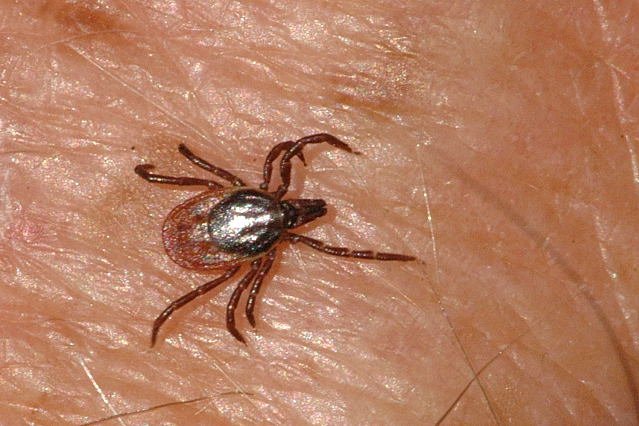Researchers collected samples of Ixodes ricinus, one of the most common types of tick found in Europe, discovering that environment can determine the parasites they carry. Photo by
James Lindsey/Ecology of Commanster/Wikimedia
Dec. 19 (UPI) -- Recent efforts to study the correlations between environmental conditions and the types of bacteria carried by sheep ticks suggest temperature has little impact on tick-borne pathogens.
Instead, scientists found humidity and competition among bacteria had the greatest influence on the combinations of pathogens carried by one of Europe's most common tick species, Ixodes ricinus.
For the study, published this week in the journal PeerJ, scientists collected sheep ticks from a variety of elevations in the Swiss Alps. Researchers identified the different pathogens carried in each tick, noting the environmental conditions characterizing the tick's home.
When scientists plugged their data into a statistical model, they found different environmental conditions had conflicting impacts on different pathogens. No one single environmental factor had a uniform effect on the success or failure of specific tick-borne pathogens.
"For example, temperature has a negligible effect on the kinds of pathogenic bacteria ticks have," Tuomas Aivelo, a postdoctoral researcher at the University of Helsinki, said in a news release. "More significant are factors related to the humidity of the surroundings, such as the aspect and slope of the sites. Borrelia afzelii is more common in slopes facing north, which are more humid than the hotter southern ones, while the Rickettsia species were more prevalent in steeper slopes that are also drier due to stronger water run-off."
Though the ticks surveyed were often separated by only short distances, the environmental conditions varied dramatically.
"In the lowest reaches of the study area, the average temperature corresponds with a hotter than average Finnish summer day, whereas the summer temperatures in the upper reaches of the area over a kilometer higher resemble an average summer in central Finland," Aivelo said.
Most of the surveyed tickets carried multiple pathogens, scientist found, which suggests infection by one increases the odds of a tick becoming infected by others. There were exceptions, however.
"On the other hand, ticks infected with Spiroplasma bacteria had much fewer human pathogens, such as Borrelia bacteria. A Spiroplasma infection is known to protect mosquitoes against many parasites and pathogens, making a similar phenomenon possible also in ticks," Aivelo said.















